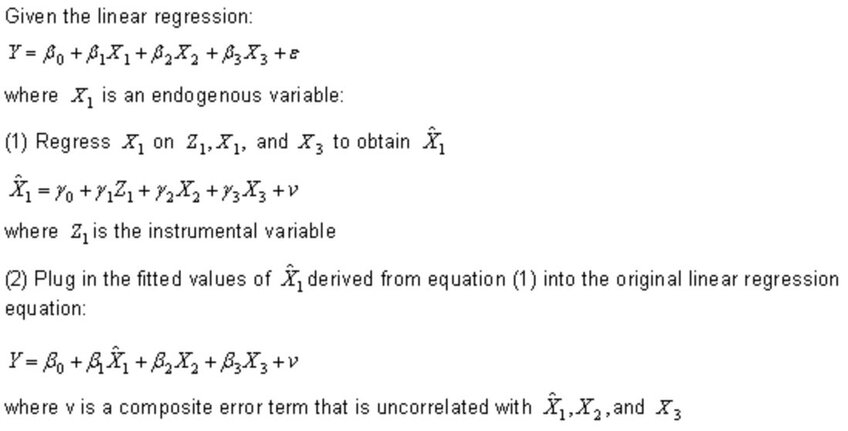June 8th, 2024
Two-Stage Least Squares (2SLS) Regression Analysis
By Alex Kuo · 10 min read

Overview
In the realm of statistical analysis, Two-Stage Least Squares (2SLS) regression analysis emerges as a sophisticated technique designed to address specific challenges encountered in structural equation modeling (SEM) and quasi-experimental studies. As an extension of the Ordinary Least Squares (OLS) method, 2SLS is particularly useful when dealing with endogeneity issues, where the independent variables are correlated with the error terms, and in scenarios involving feedback loops within the model. This blog explores the fundamentals of 2SLS regression analysis, its applications, and how tools like Julius can streamline this complex analytical process.
Understanding 2SLS Regression Analysis
1. First Stage: This involves identifying and utilizing an instrumental variable (IV) that is correlated with the problematic predictor but not with its error term. The IV helps in creating a new variable that substitutes the original problematic causal variable, paving the way for a cleaner analysis.
2. Second Stage: The model-estimated values derived from the first stage replace the actual values of the problematic predictors. An OLS model is then applied to these substituted values to analyze the response of interest accurately.
Instructions on how to perform a two-stage least squares (2SLS) regression analysis:

Key Concepts and Terms
- Instruments: Instrumental variables serve as substitutes in the analysis to resolve the issue of endogeneity by providing a correlation with the problematic predictor that does not extend to the error term.
Practical Applications of 2SLS
- Estimating budgetary allocations for agricultural production based on fluctuating wheat prices.
- Analyzing trends in commodity prices and their impact on production costs.
- Determining final product pricing by accounting for variable costs influenced by endogenous factors.
How Julius Can Assist
Julius, a statistical analysis and Math AI tool, offers invaluable support in conducting 2SLS regression analysis:
- Variable Identification: Julius aids in identifying suitable instrumental variables by analyzing correlations within the dataset, ensuring the validity of the first stage of 2SLS.
- Automated Calculations: It automates the complex computations involved in both stages of 2SLS, from creating new variables using the instrumental variable to applying the OLS model with substituted values.
- Data Visualization: Julius provides visual representations of the regression analysis outcomes, making it easier to interpret and communicate the results to stakeholders.
- Error Detection and Correction: It assists in detecting potential errors arising from endogeneity and suggests corrective measures, enhancing the reliability of the analysis.
Conclusion
Two-Stage Least Squares (2SLS) regression analysis is a critical tool for researchers dealing with endogeneity issues in structural equation modeling and quasi-experimental studies. By effectively addressing the correlation between independent variables and error terms, 2SLS ensures the accuracy and integrity of the analysis. Tools like Julius are revolutionizing how these analyses are conducted, offering automation, precision, and clarity in understanding complex statistical relationships. Embracing such advanced analytical tools not only streamlines the research process but also opens new avenues for drawing meaningful insights from data.
Frequently Asked Questions (FAQs)
What is the purpose of 2SLS?
The primary purpose of 2SLS is to eliminate bias caused by endogeneity, where an independent variable is correlated with the error term in a regression model. By using instrumental variables to substitute problematic predictors, 2SLS ensures more accurate and reliable estimates, making it a valuable tool for analyzing causal relationships in complex systems.
What is the difference between 2SLS and IV?
Two-Stage Least Squares (2SLS) is a specific method that uses instrumental variables (IV) to address endogeneity issues in regression analysis. While IV estimation focuses on finding and applying instruments, 2SLS extends this by breaking the process into two stages: first, creating predicted values for the endogenous variable using the instruments, and second, using these predicted values in the final regression model.
What is the difference between ILS and 2SLS?
Instrumental Least Squares (ILS) is a simpler method that directly applies instrumental variables to adjust for endogeneity, often in a single step. In contrast, 2SLS divides the process into two stages for greater precision, first isolating the variation explained by the instruments and then estimating the regression model, offering enhanced robustness and flexibility for more complex data structures.
